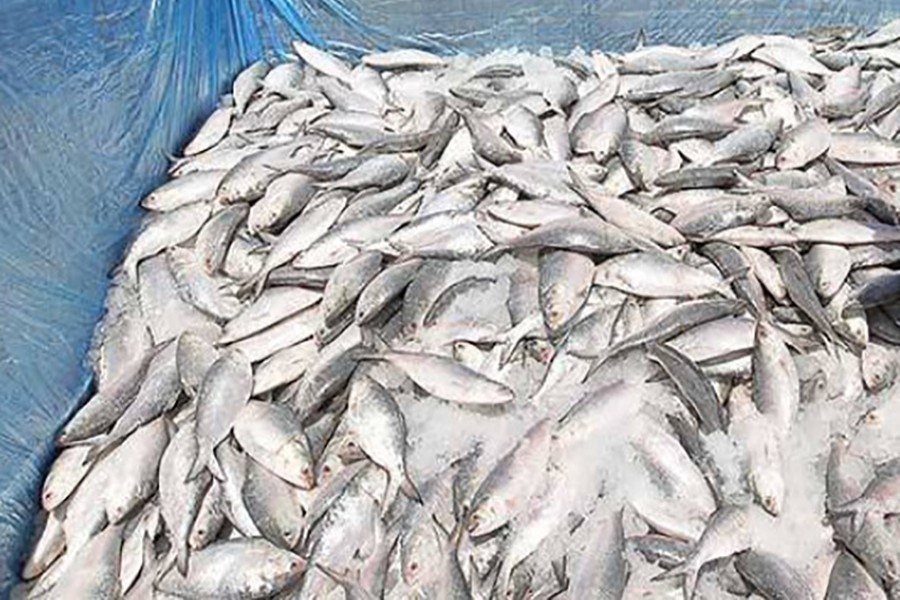A few years since the government had slapped an annual ban on netting hilsa fishlings, the measure seems far from being in force meaningfully. However, the bans have resulted in impressive growth in hilsa yields. In spite of this, the vocal segments in society detect in the programme the elements of a slipshod attitude. This approach could turn many great ventures into mere inanities, and wastage of the taxpayers' money. The step of slapping a ban, from 22 days to the ongoing two months, on brood hilsa catching was taken with a noble intention --- allowing the delicious fish to reach the stage of maturity. It was the catching of the young fish indiscriminately by fishermen that warranted this action. Before the ban was in place, Jatka (premature hilsa) would flood the market. A strong syndicate used to call the shots in Jatka business across the country, veritably making people hooked on the consumption of Jatka. It needs no elucidation that by eating Jatka people in general are being deprived of the nutrients and the other food qualities found in a full-grown fish.
A major attribute of hilsa is its being rich in fatty acid omega 3 which lowers risks of heart disease and stroke. Tersely speaking, without adequate volumes of hilsa the fish-eating Bengalees are being deprived of the unique proteins of the fish, the national fish. The irony is, in the last couple of decades the hilsa yield witnessed a spectacular increase. A large quantity of them would once end up being smuggled into the neighbouring Indian states. The jinx came to an end last year when Bangladesh formally announced its resumption of hilsa export to West Bengal, Tripura and Assam. But the menace of Jatka-catching pops up as a hindrance to both sufficient consumption of hilsa domestically and the fish's export bonanza.
The traditionally hilsa-dominant areas in the country's rivers fall under the ban's purview. The measure is harsh, with provisions for fines and other punishments for the errant fishermen. The ban targets catching, selling and transporting hilsa to protect the mother fish till spawning. Like in the past, this year is also witnessing hide-and-seek between the fisheries authorities and the seemingly defiant segments from the fishing community. They are bent on netting Jatka during the ban period. Beginning from March 01 this year, the 2-month-long ban has already passed nearly half of its duration. During the time, the department of fisheries in collaboration with law enforcers conducted raids on clandestine Jatka-netting activities in areas under the ban. On the other hand, the so-called wholesalers engaged in the trade and retailers selling Jatka to consumers - both being done furtively and interspersed with legal swoops, became a part of the exercise.
People and agencies monitoring the situation have identified a number of drawbacks, one of them being the fishermen falling on hard times. With no fishing activity during the ban period many of them have to pass through financial hardships. However, windfall profits also prompt many to go after Jatka. It is both the financially-hit and greedy fishermen who have been found to be casting their hilsa nets in the remote areas of a river after dusk. Moreover, monitoring of the ban's efficacy requires sufficient manpower. The members of law enforcement agencies and other striking forces comprise a significant part of the mobile teams in operation. Quite often they are outnumbered by local gangs. In spite of all these bottlenecks, the GI tag winning hilsa must emerge as a totem of Bangladesh's identity.


